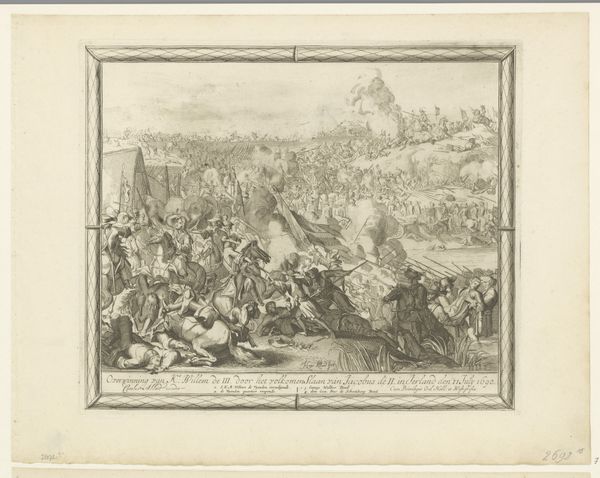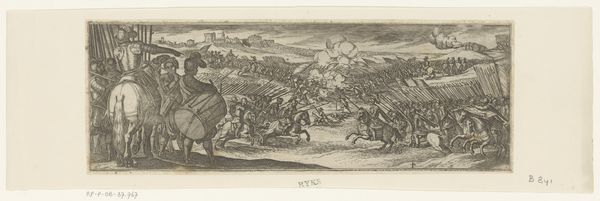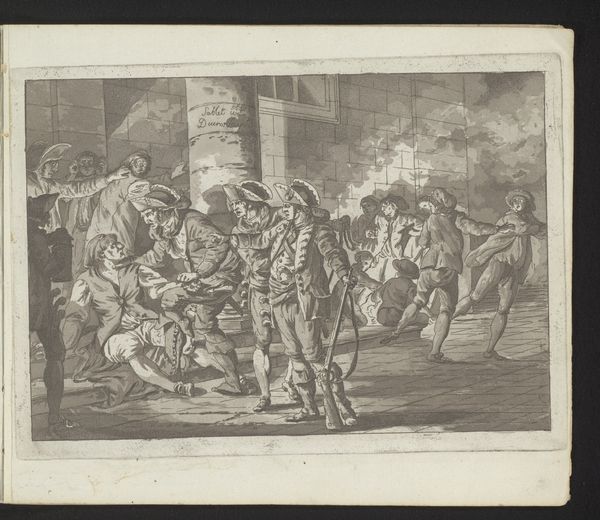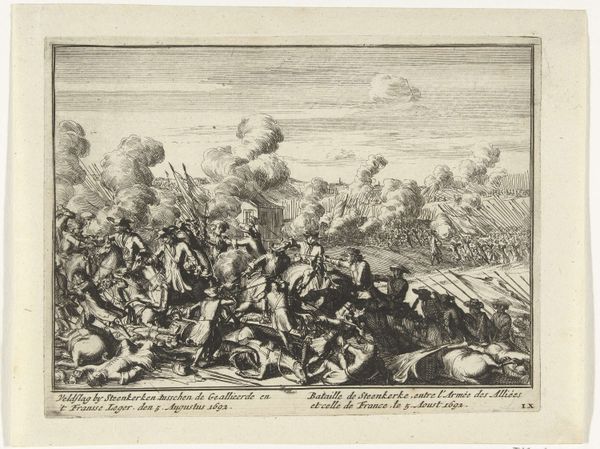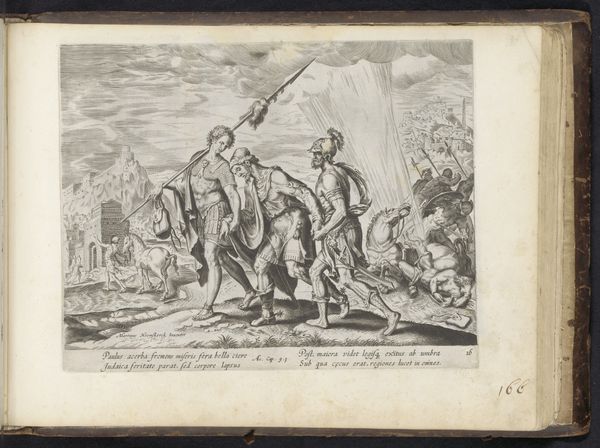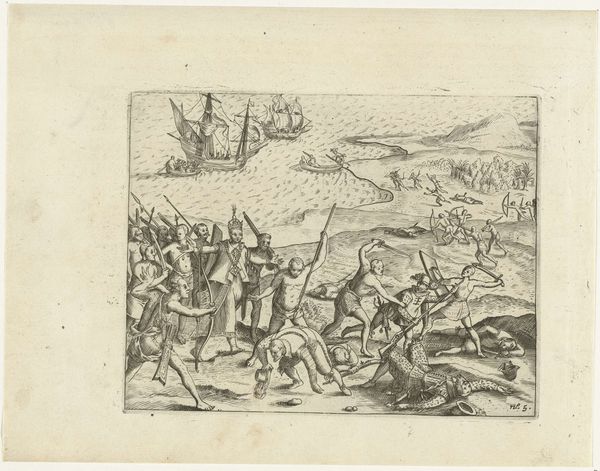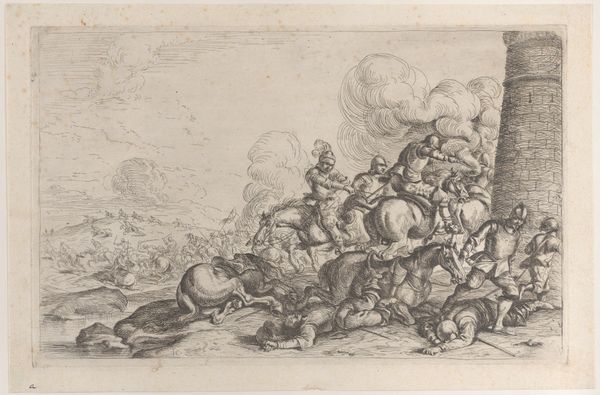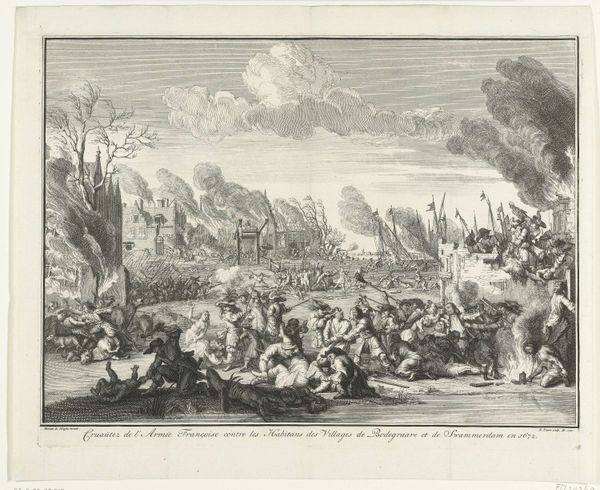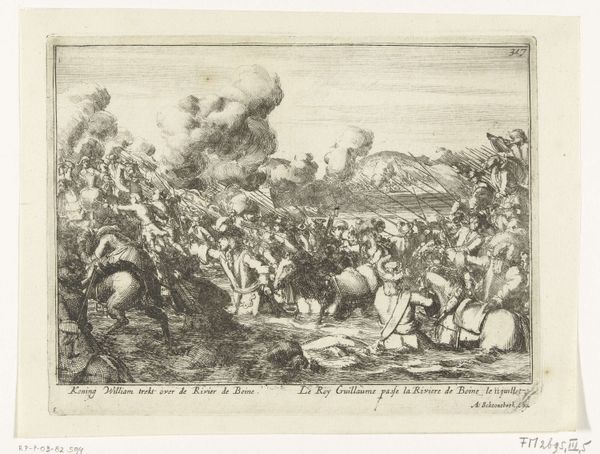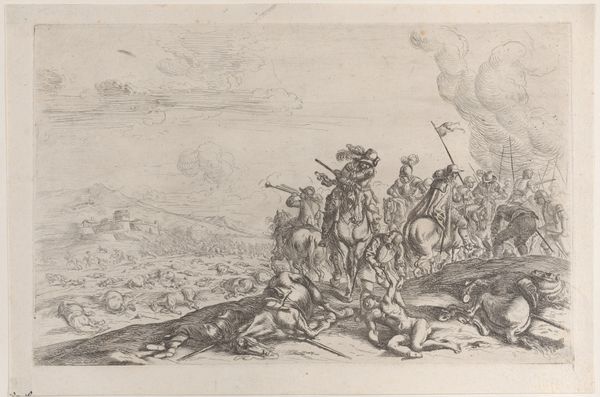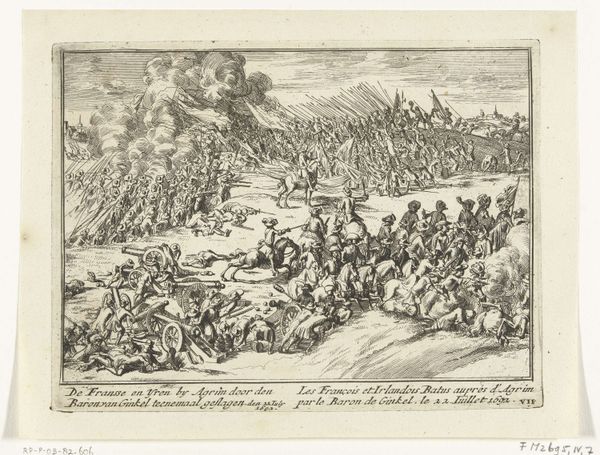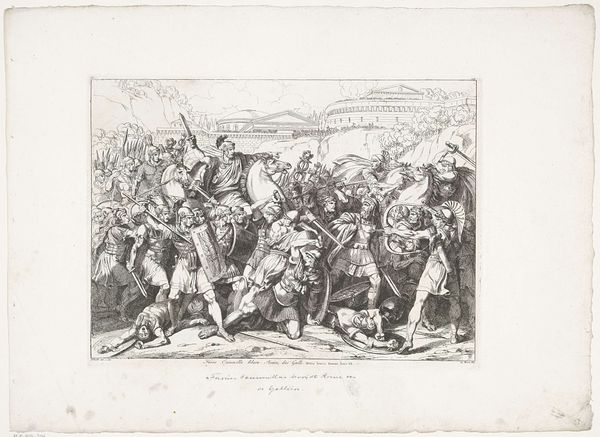
print, engraving
#
narrative-art
#
baroque
# print
#
landscape
#
figuration
#
line
#
history-painting
#
engraving
Dimensions: height 152 mm, width 195 mm
Copyright: Rijks Museum: Open Domain
Curator: Look at the frantic energy conveyed in this 1689 print, "Monmouth wordt door Feversham verslagen, 1685" by Pieter Pickaert. Editor: My initial reaction is chaos, and perhaps futility. Look at that overwhelming surge of smoke! The eye struggles to find a still point, a place of rest, amid the conflict rendered so vividly. Curator: The print depicts the defeat of the Duke of Monmouth by Lord Feversham, an event laden with symbolic meaning within the context of English succession struggles. Consider the very figures embroiled in the skirmish: do they carry associations beyond mere combatants? Editor: The lines are strikingly dense, particularly in the foreground, conveying both a sense of immediacy, and also an unsettling claustrophobia. Even the landscape appears consumed by the battle. This technique draws us right into the heart of it. It's hard to distance yourself. Curator: Precisely, and if we reflect on the broader themes within narrative art of this period, defeat is not merely an event. It's a potent symbol ripe with social and moral ramifications, inviting a deeper consideration of power, loyalty, and ultimately the human cost of ambition. The puffs of smoke almost resemble demonic presences. Editor: The almost monochrome aesthetic contributes to that feeling. There is no light and shadow contrast playing up some baroque ideal. The flat even line only pushes more the feeling of panic and confusion you could imagine was really there at that battlefield in 1685. Curator: The rendering, as engraving on a printed sheet, becomes especially poignant because it extends that cultural memory across generations. Each viewing is a recollection of an unstable, fragile political moment. Editor: I hadn't considered it like that; it certainly gives new weight to each strike of the engraver’s tool. What starts out as mere rendering of physical appearance evolves into historical encoding. Curator: Exactly. Hopefully viewers will engage more with works that bridge historical representation and visual memory, creating a richer experience of the artwork’s historical implications. Editor: The linear detail allows viewers to discern nuances of historical context otherwise obscured. Thank you, I enjoyed the deeper dive into those cultural details.
Comments
No comments
Be the first to comment and join the conversation on the ultimate creative platform.
